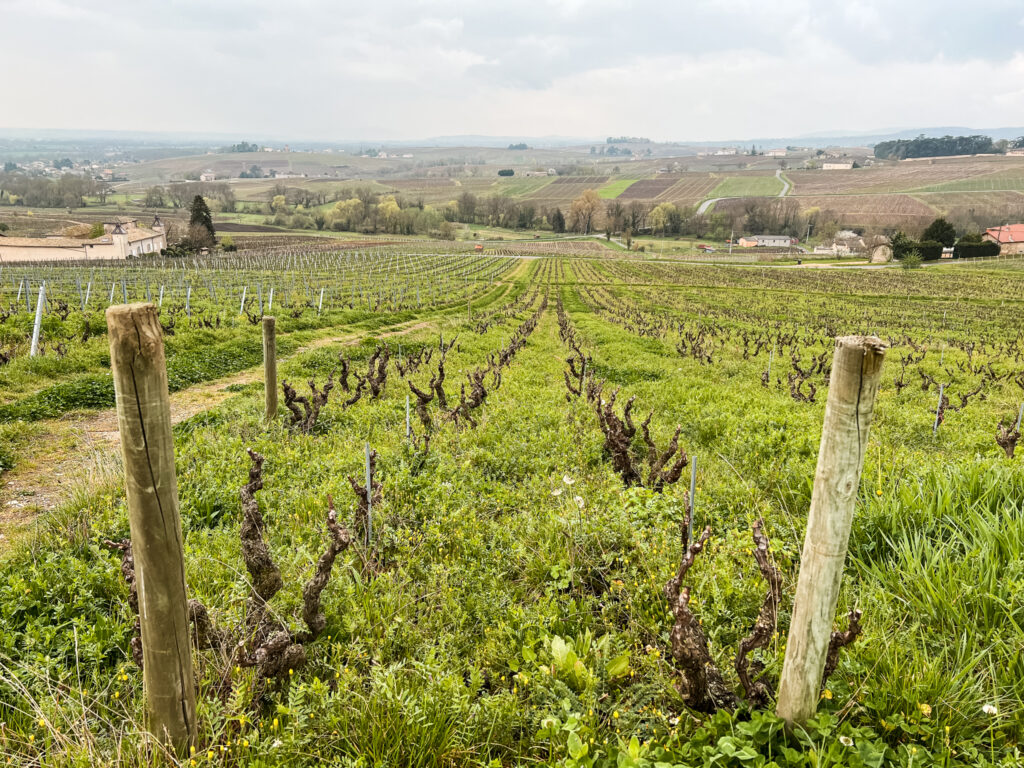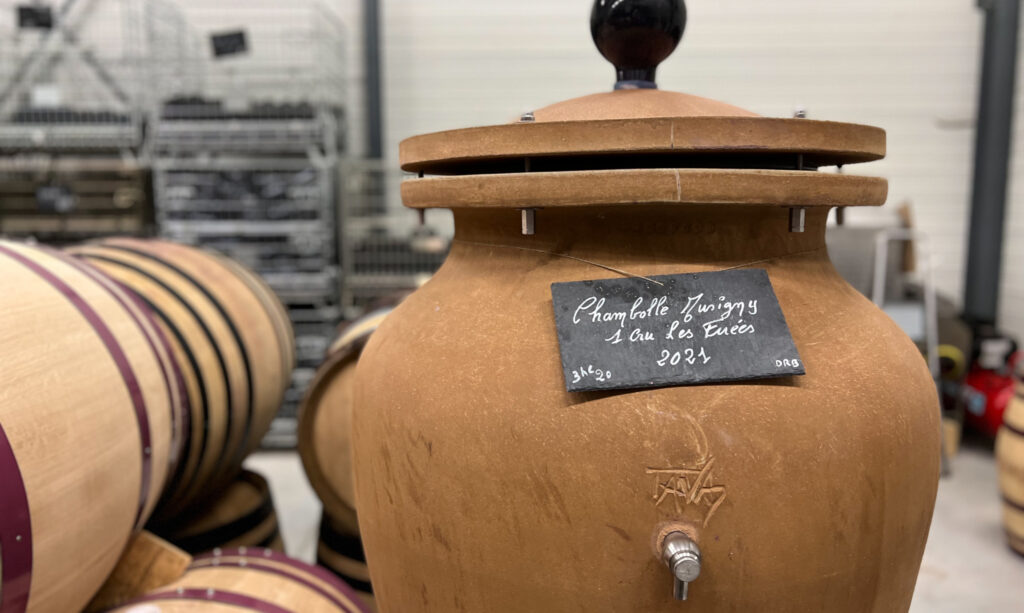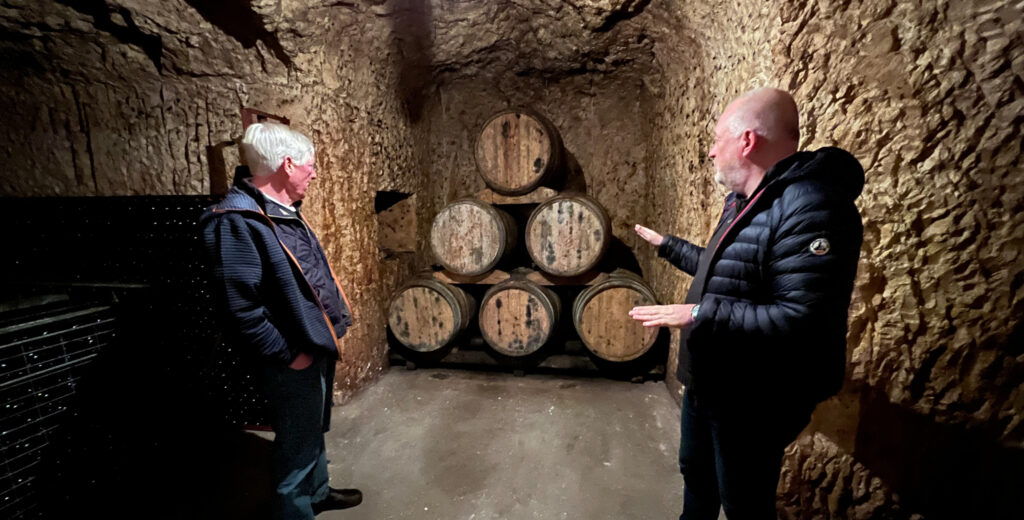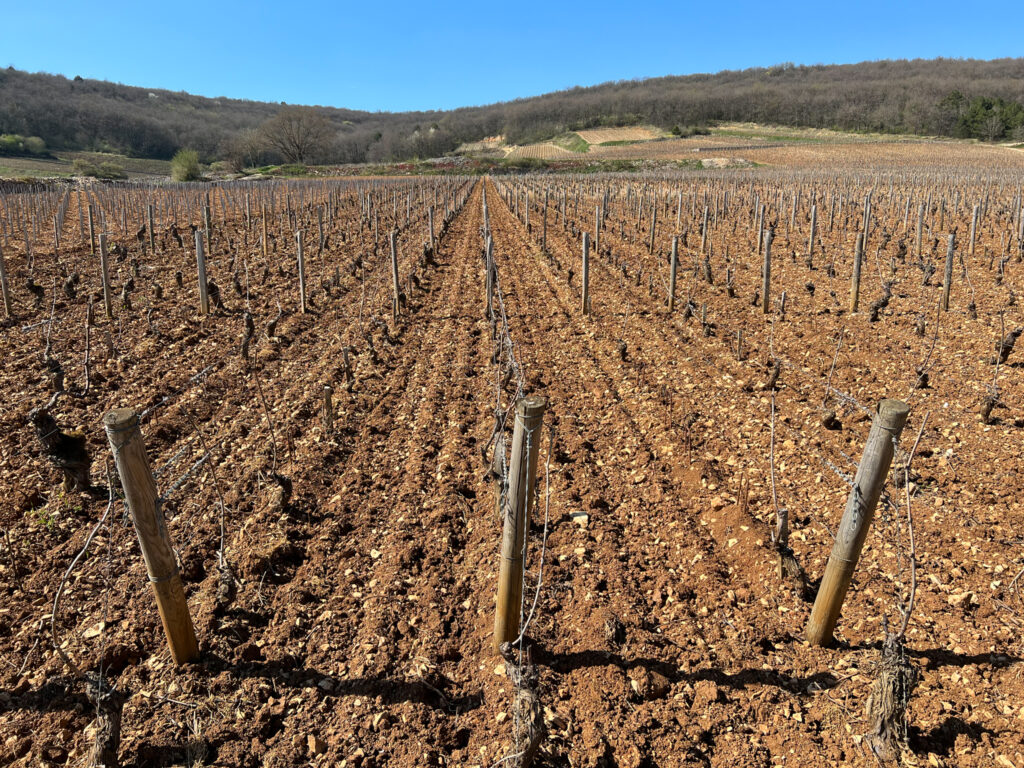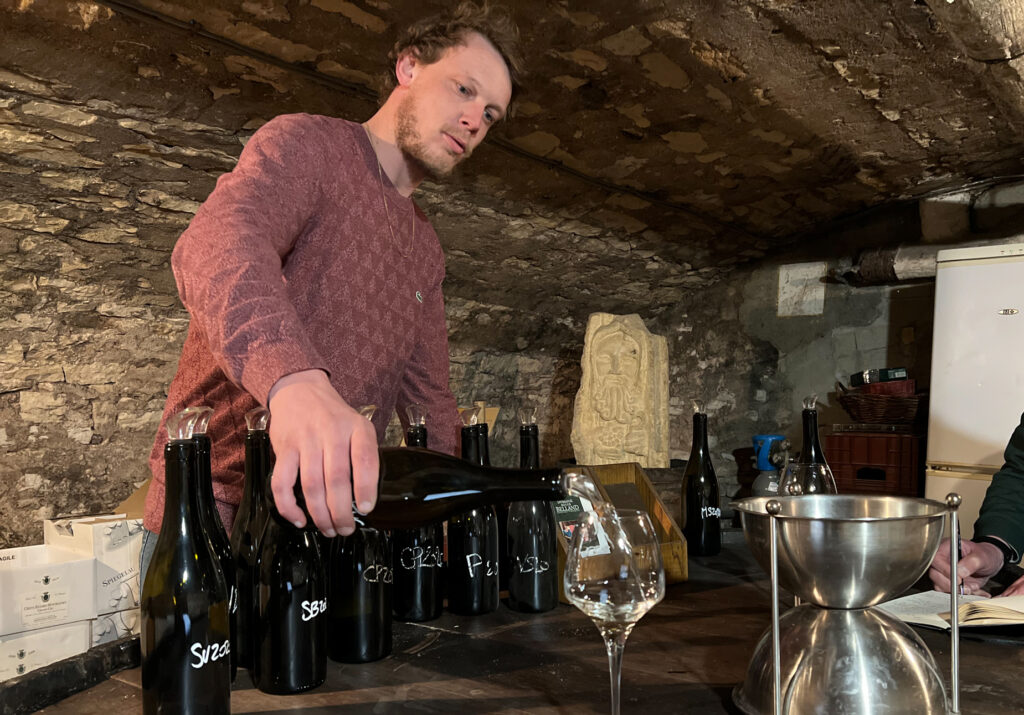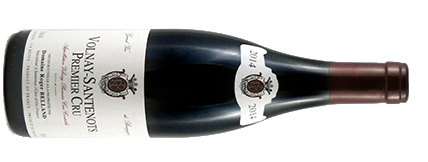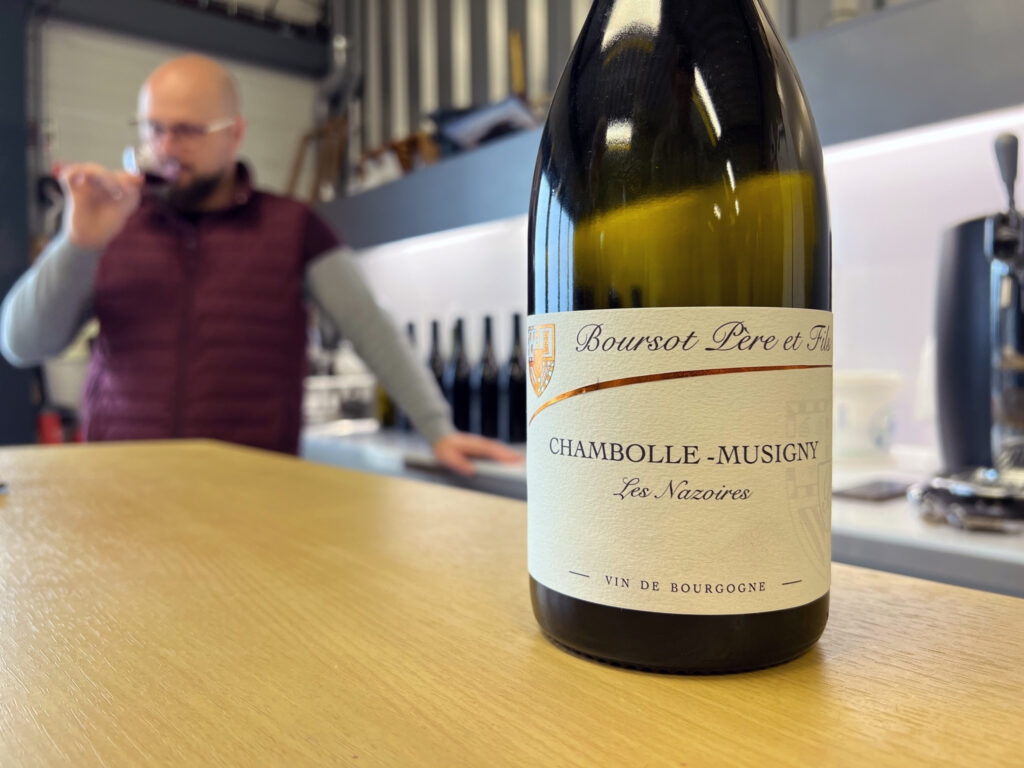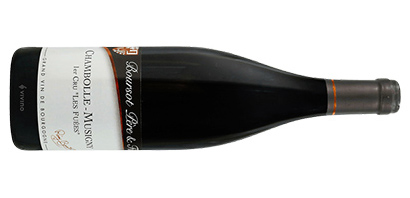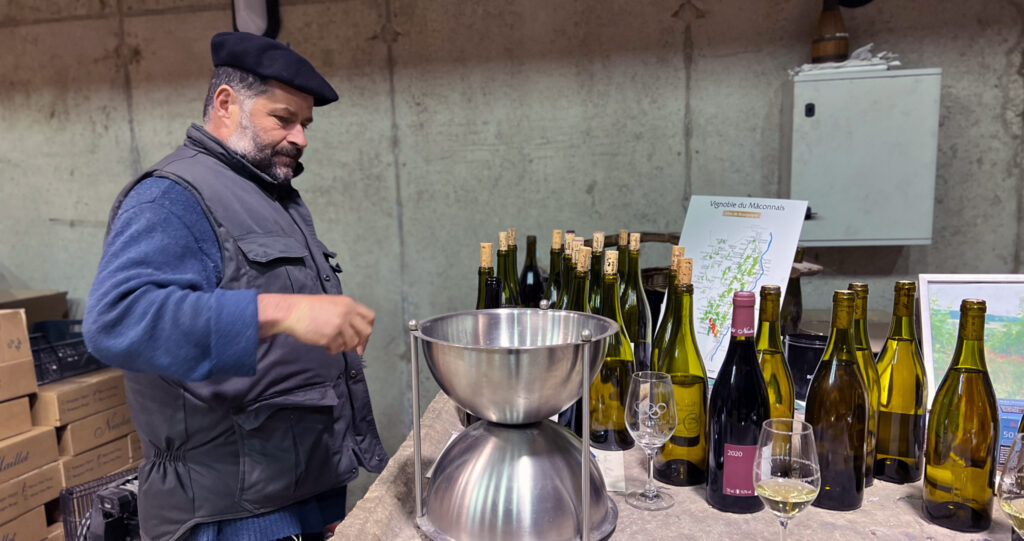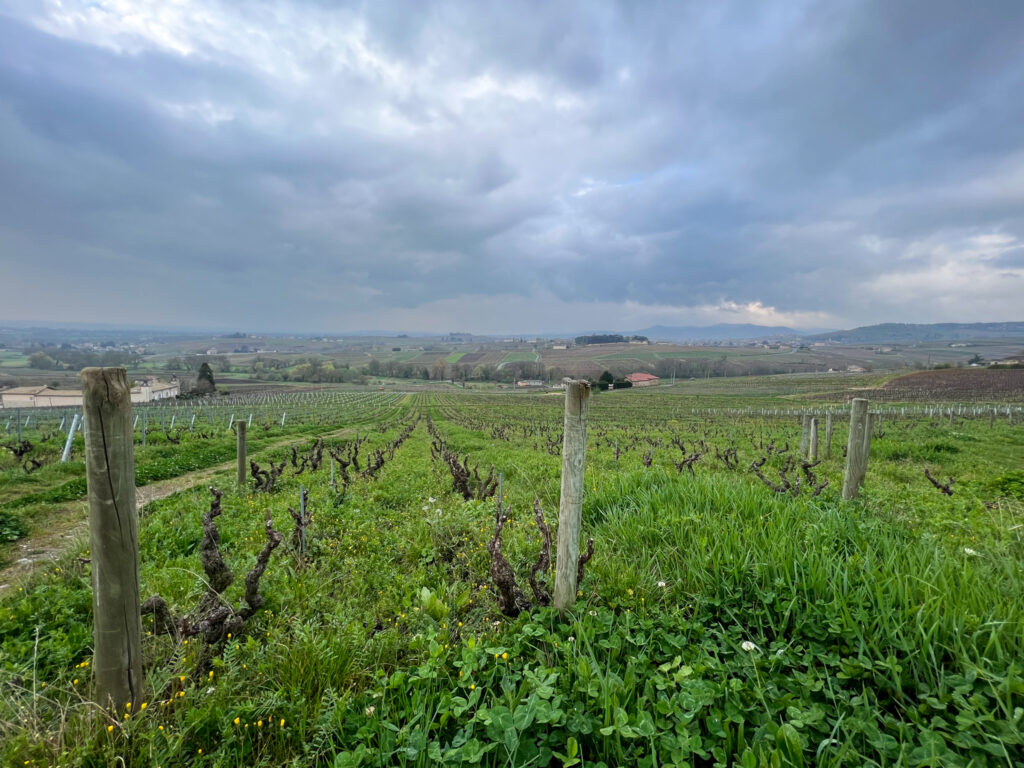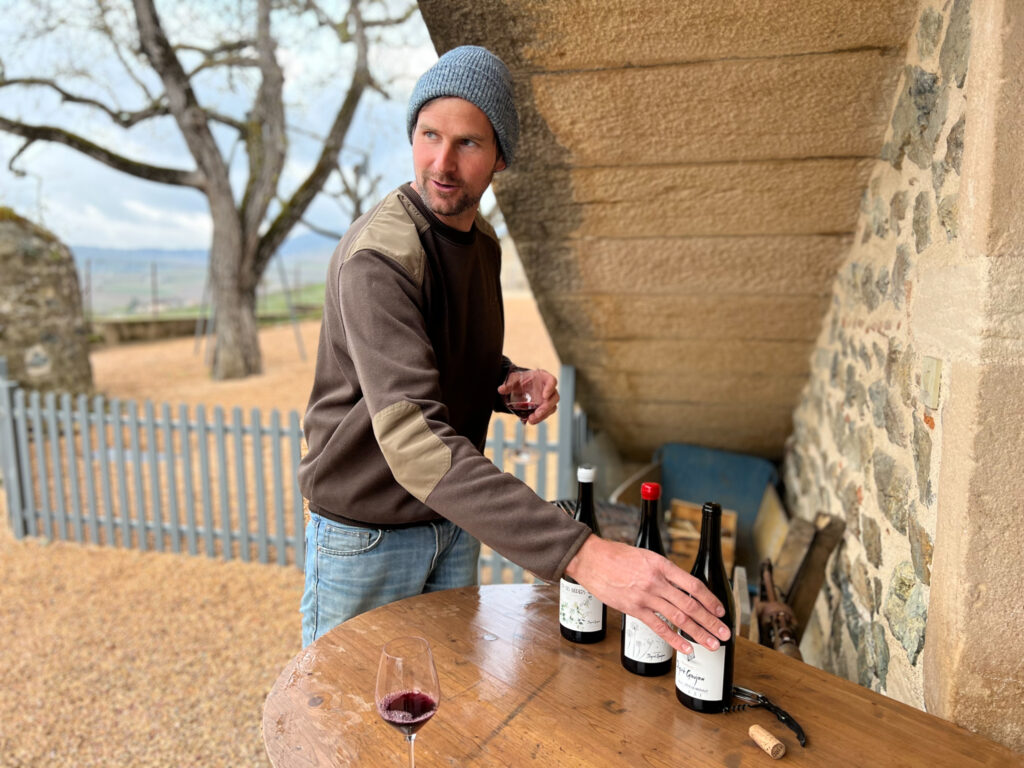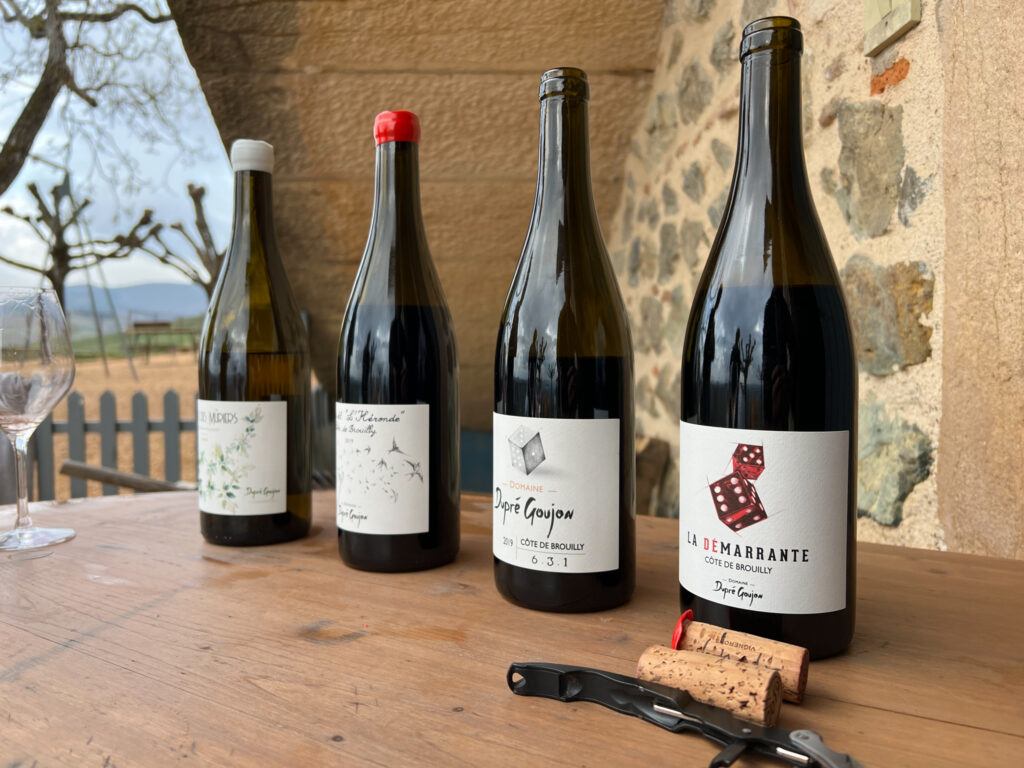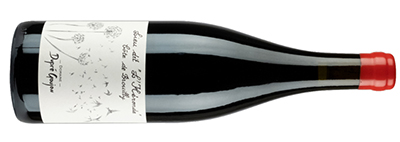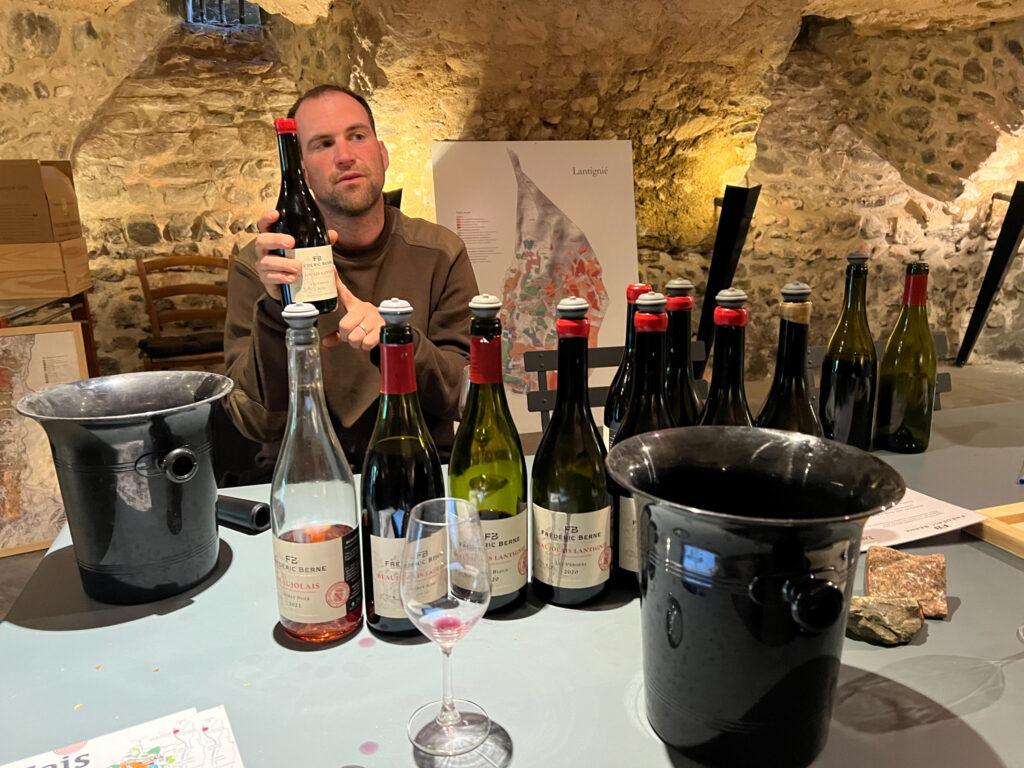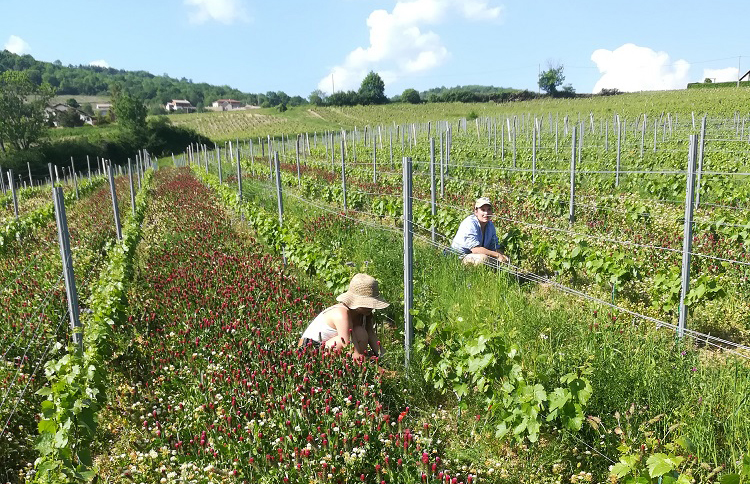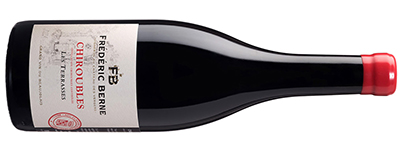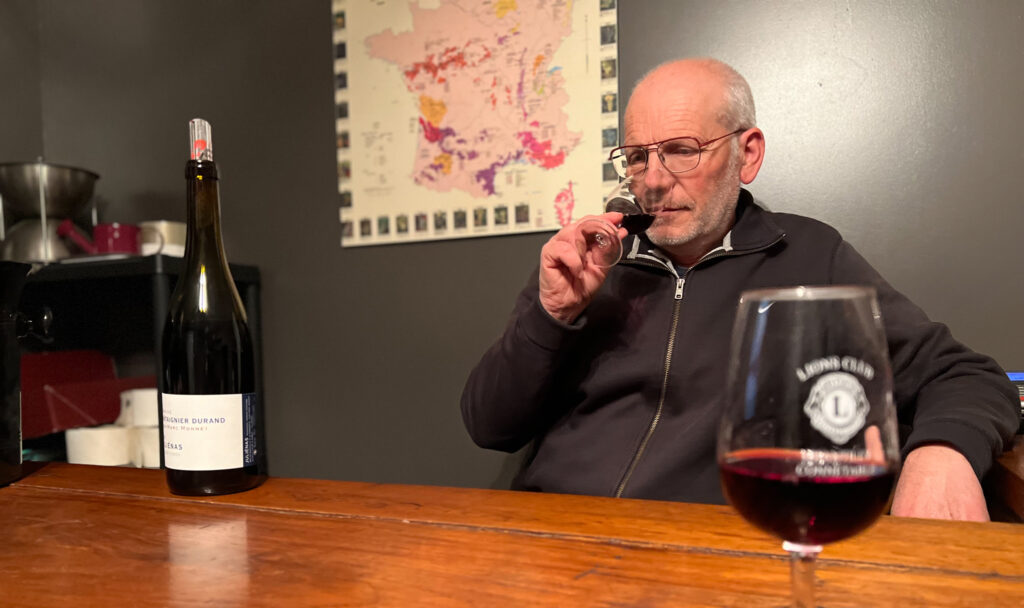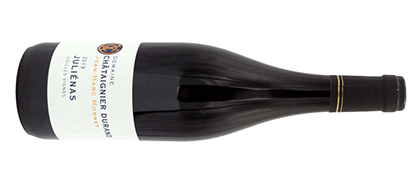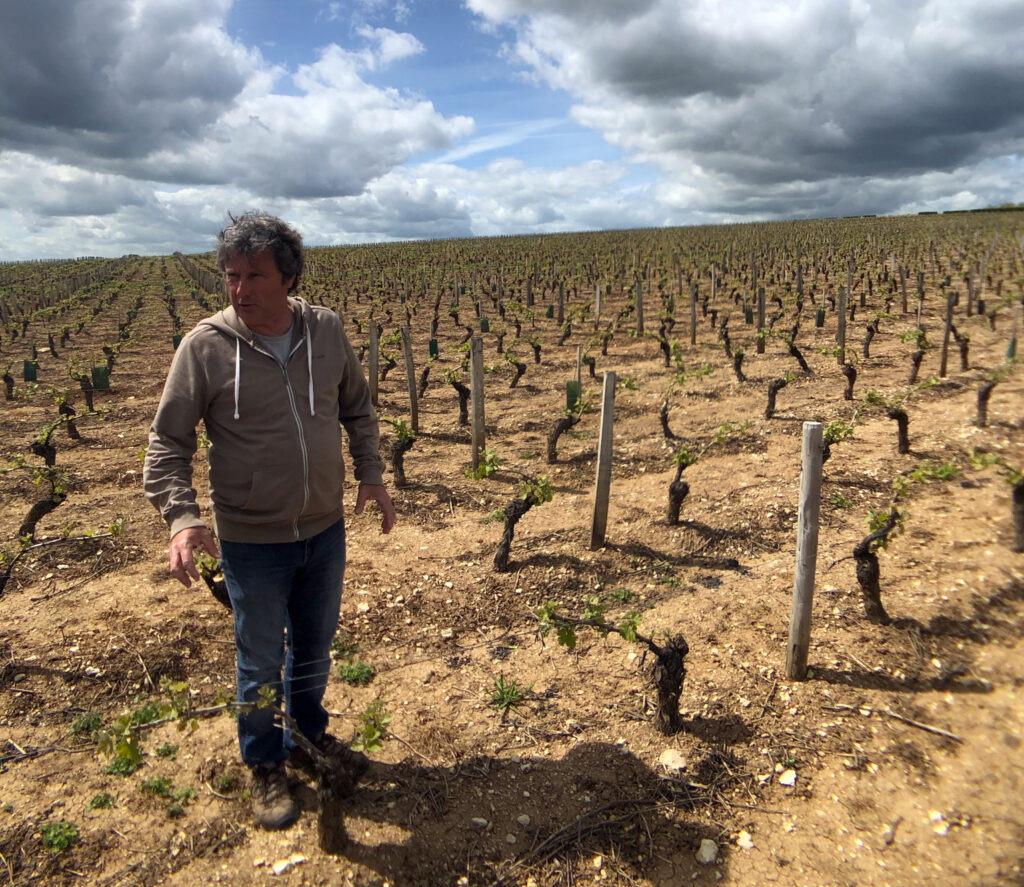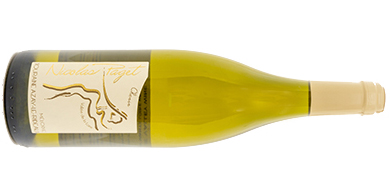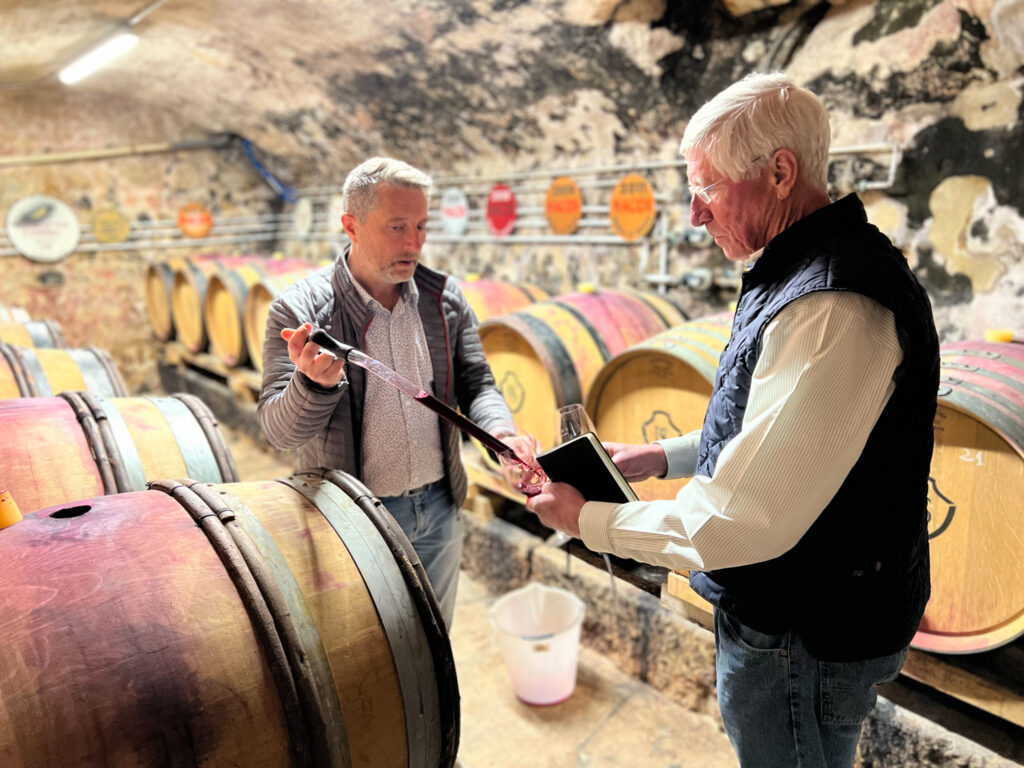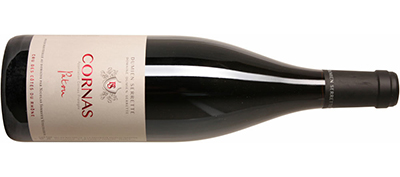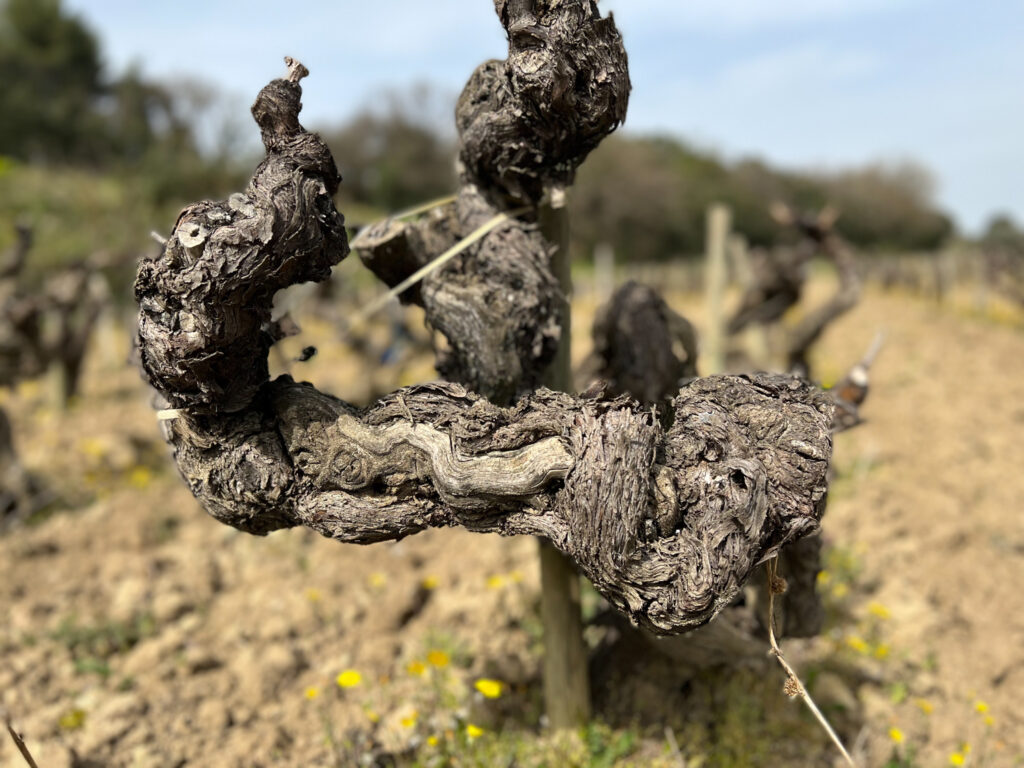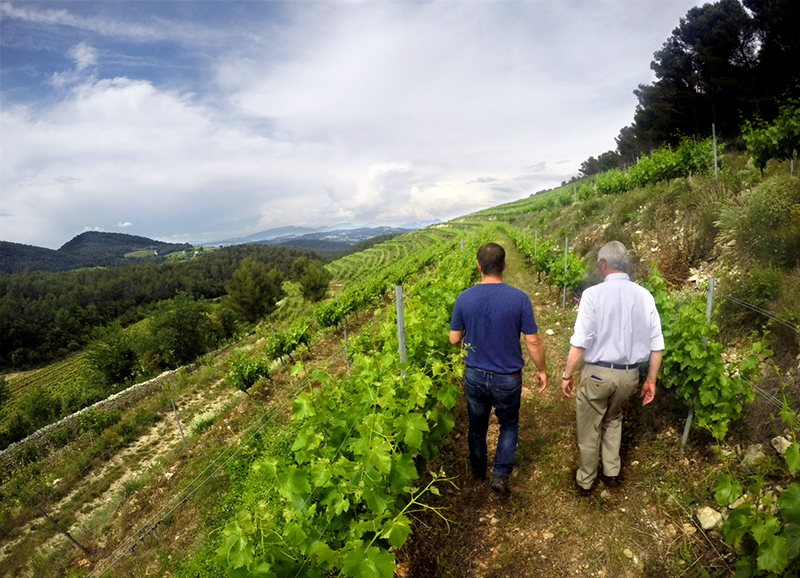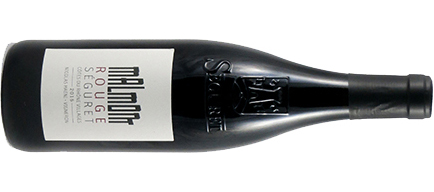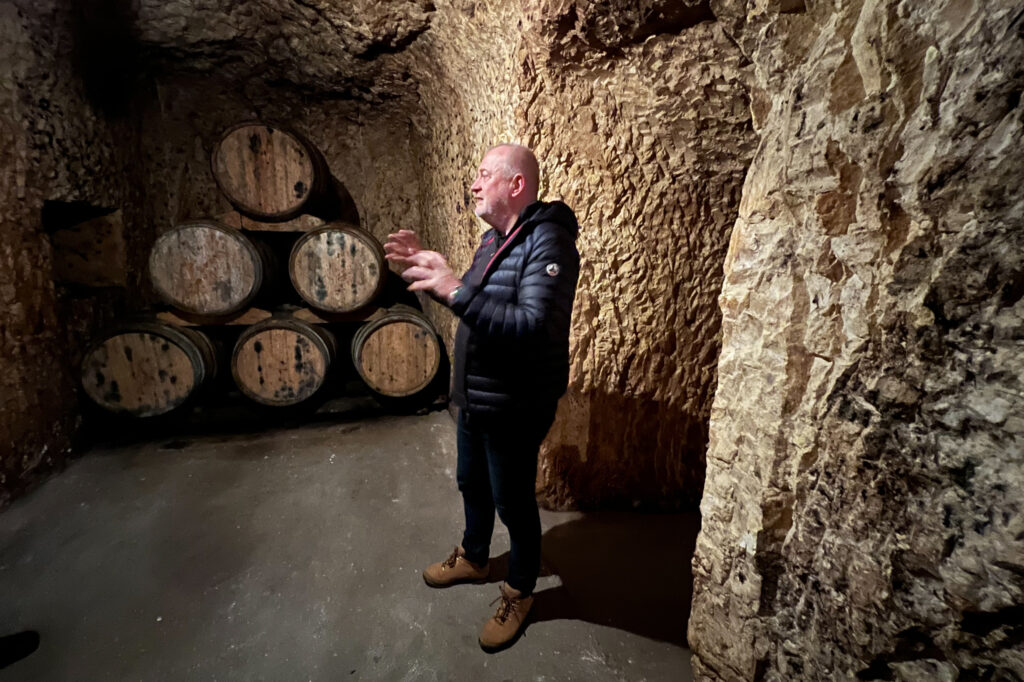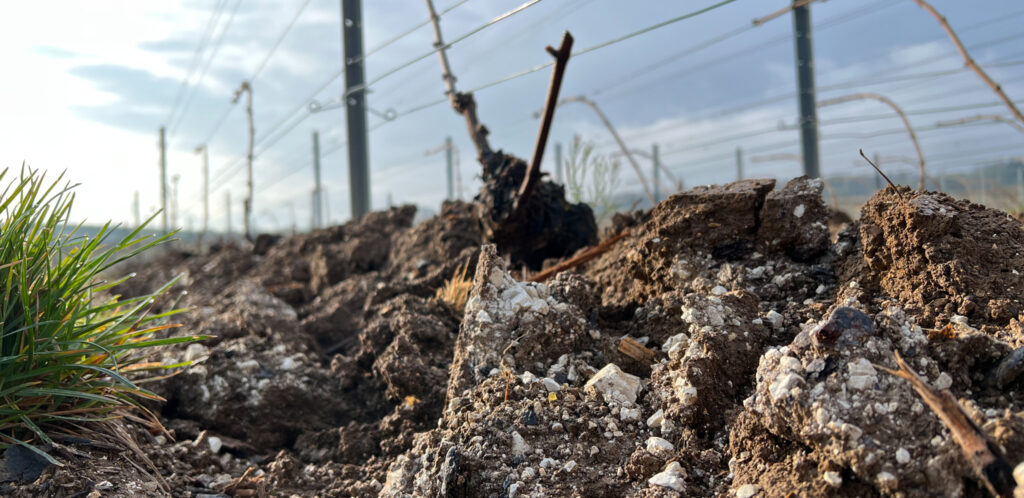Our lineup for July Futures provides an opportunity to reflect on the richness of choice in French wine these days. Twenty years ago a drive through the vineyards of the Côte d’Or revealed a remarkably consistent landscape. Bare soil was nearly everywhere between the rows and flowers appeared only at the end stakes. The posts and wires that support and shape the summer’s growth were the much the same up and down the Côte. Canopies looked identical everywhere. The cellars and barrel rooms were more the same than different. Beginning with innovators like the legendary Lalou Bize-Leroy, the scope for diverse practices in vineyards and cellars slowly opened. Organic viticulture, once a curiosity, now dominates. Elements of biodynamics, once widely seen as voodoo, have moved steadily into the mainstream. In the cellars, cement eggs and amphoras have taken their place among the barrels and foudres. Low or no intervention in the natural processes has passionate adherents, and a trip to the vines offers widely varying scenes. As a result of all this, the unique beauty of terroir has new modes of expression: enhanced complexity, occasional notes of wildness, and generally wider palates of aroma and taste. We think this is progress, and we are delighted to have such wines in our cellars and offerings. We’re not, though, about to abandon the great wines made by masters of traditional technique. Michel Gros’s Vosne-Romanées are like a Swiss watch, carefully crafted to show the best of his marvelous terroir, and we will continue to buy and offer them with enthusiasm. July’s Futures includes winemaking across this expanded spectrum. There are exciting new wines from the Beaujolais. There is Châteauneuf from centenarian vines that haven’t seen chemicals in half a century; and mountain-grown Seguret from a nearby vineyard just a decade old. There is Champagne from chalk cellars that have looked the same for a century. There are refreshing everyday whites from the Loire. There are red and white Burgundies in a wide range of methods and styles. In short, we hope, something for everyone in this Futures offering. If anything is of interest, don’t forget to place your orders in case or half-case lots by the Order Deadline of July 17, 2022. We’ll be placing the orders in France immediately thereafter. JUMP TO SECTION
Belland
Boursot
Maillet
Dupré-Goujon / Berne
Monnet
Michot
Paget
Dumien-Serrette
André
Malmont
Lancelot-Royer
July Futures
Order Deadline 7/17
Domaine Roger Belland
Santenay, Burgundy
The Côte de Nuits is more famous for its red wines; the Côte de Beaune more for its white wines. Making general statements about the subtle distinctions of Burgundy’s terroir is always risky, but there is also some truth in them. Reds from the Côte de Beaune tend to show their structure in their youth, and while their fine-grained tannins can evolve into thrilling glasses, they usually require a bit more time to show their best than those of the Côte de Nuits. The exception to this rule is the town of Santenay. There the Côte de Beaune rotates a bit toward the south, which makes for sunnier vineyards and red wines whose textures resemble their pricier cousins from the Côtes de Nuits. The Domaine Roger Belland, our source in Santenay, consistently makes delicious reds that offer particular value in this time of high demand for all things Burgundian. The 2020 vintage is excellent there — the product of a hot and dry growing season that resulted in lower-than-normal yields. We’re excited about two particular Santenay reds in 2020. Belland’s Santenay 1er cru “Gravières” 2020 highlights the virtue of the best 2020s: though the vintage is a very ripe one, the dryness left enough acidity in the grapes to keep the wines fresh and vibrant. Thus the wines are well balanced and should age beautifully. Allen Meadows (“Burghound”) praised the Gravières 2020 for its “intense and elegant floral-suffused nose,” finding “black cherry liqueur, soft spice, and earth.” It’s 40% whole cluster fermentation this year, giving excellent definition to the lush fruit. Our second pick is a wine we haven’t offered in a while: “Commes” 1er cru 2020. Like Beauregard, it’s on the upper part of the slope and the wine it produces is more precise, with excellent density and very fine tannins. It is just a touch lighter in weight than Gravieres, and refinement is its particular virtue. It’s also more mineral than Gravieres, and the only 20% whole cluster fermentation gives it a less structured feel. Both are delicious. The Bellands have vines in other villages of the Côte de Beaune, including a large (by Burgundy standards) premier cru monopole – the Clos Pitois – which lies just across the border in the Morgeot sector of Chassagne-Montrachet. Clos Pitois rouge 2020 is classic Côte de Beaune red Burgundy, dense and finely textured – pretty rather than bold. Burghound awarded this wine his “particularly outstanding for their respective appellations” distinction. He praised its nose as “fresh and bright,” with a “pretty essence of red and dark berries, pepper and earth,” all “trimmed in … menthol.” He thought it “firm enough to reward up to a decade of cellaring.” Perhaps not coincidentally, the 2013 vintage of this wine is just gorgeous right now, and this description of the 2020 could easily have been written about the 2013. We’d give this 2-3 years before enjoying. Our last 2020 red from Belland is from what many consider to be the very best red wine vineyard of the Côte de Beaune: Volnay 1er cru “Les Santenots.” This shows Volnay’s signature silky tannins, and a long, lush finish. Belland fermented this wine with 100% whole cluster this year to provide definition to the concentrated fruit, and the wine is perfectly balanced. Burghound called it “rich, seductively textured and velvety.” We were struck by the complex aromas of dark fruit and spice, and as usual were impressed with its elegance. Belland also has an embarrassment of riches in white wine terroir, and the wines are uniformly impressive. As usual, the contrarian pick of white Santenay 1er cru “Beauregard” offers excellent value. This is full bodied white Burgundy, rich and round, with notes of oak mingled with ripe fruit. And the paradox of the 2020 whites – vibrant freshness in a hot year – is on full display. At the next level up, the Clos Pitois blanc lives up to every inch of its Chassagne-Montrachet 1er cru pedigree. From a two hectare monopole of 50 year-old chardonnay vines, this is one of the southernmost vineyards in Chassagne. The wine is opulent and rich and intense as always, but we found it more refined this year than usual. Belland keeps his oak limited to 30%, and the pedigree of both the terroir and the vintage shine clearly. It is also a complex wine, with the clean chardonnay fruit mixing with more exotic notes, all tied together with beautifully balanced notes of oak. The 2020 Pitois blanc is less showy than it sometimes is, but it’s unmistakably finer. Belland also has a fine parcel in Puligny-Montrachet’s Champs Gains 1er cru, and 2020 is an excellent year there. This wine is very much a Puligny, giving up a bit of Chassagne’s weight for a racy elegance. The fruit and floral notes are carefully channeled across a long, very intense palate. It will need some time to develop, but its dry freshness should soften just as the floral notes in the nose begin to assert themselves and the white peach and lemon fruit melt together. We can’t wait to see this in a year or two, but it’s got the stuffing to go a decade. As if these parcels were not impressive enough, Belland owns almost 40% of Criots-Bâtard-Montrachet Grand Cru, the smallest vineyard in the famous Montrachet Grand Cru complex. Burghound found aromas of “white and yellow peach, passion fruit, lychee, and soft floral hints,” and praised its “outstanding richness” and “impressively long finale.” At this stage it’s the length that’s most impressive; but as usual we have no doubt this will mature into something spectacular. If you have both the budget and the patience that a Grand Cru wine in this category requires, this one is worth your consideration. (Minimum order 2 bottles, enter 0.166.)
BELLAND Santenay 1er “Commes” rouge 2020: $450 Santenay 1er “Beauregard” blanc 2020: $495
(case prices)
Santenay 1er “Gravières” rouge 2020: $450
Chassagne-Montrachet 1er “Clos Pitois” rouge 2020: $595
Volnay 1er “Santenots” 2020: $795
Chassagne-Montrachet 1er “Clos Pitois” blanc 2020: $995
Puligny-Montrachet 1er “Champs Gains” 2020: $1295
Criots-Batard Montrachet Grand Cru 2020: $4,500
Domaine Boursot
Chambolle-Musigny, Burgundy
Our newest producer in Côte de Nuits continues to impress. You may recall that a few years ago the latest generation of Chambolle-Musigny’s Boursot family moved the Domaine’s cuverie out of the ancient warren of cellars in the heart of the town, where they had been making wine since the 1500s. Of course the move was only to enhance the winemaking process — the Boursots have kept the family’s village and premier cru parcels in this tiny and very special corner of Burgundy. We are delighted with what we see there, and expect good things to continue to come from them. This year we found that clay amphoras had joined the vats, barrels and foudres in the new cuverie. These allow micro-oxygenation at the same level as small oak barrels, but without the oak flavors; so by using both barrels and amphoras, the winemaker can more precisely calibrate the amount of oak coming into the wine. The Boursot brothers experimented with a few over the last few years, were thrilled with the results, and have ordered more. The Domaine’s 2020 entry-level red is a Bourgogne Côte d’Or of which 80% comes from vines that are below Chambolle and 20% from vines below Vosne. It is raised entirely in vat, and offers lively, lovely fruit — croquante (“crackling”) and fresh. The fruit recalls strawberries, quite ripe, but the darker red fruit of wild strawberries rather than cultivated ones, and comes with a bit of spice. This is a medium bodied, pleasant wine – intense like everything in 2020 – but just right for quaffing at an early-season football game tailgate, or paired with chicken thighs from a grill. The Côtes de Nuits Villages “Retraits” is the Boursot wine most popular with our clients. It comes from a parcel just along the south side of the wall that encloses Frederic Mugnier’s celebrated Nuits St. Georges 1er cru Monopole “Clos de la Maréchale.” The 2020 offers a lovely ripe nose of fruit and spice that is darker and more complex than the Bourgogne, coupled with engaging freshness (about 20% is raised in amphoras). It’s less juicy, more serious, and finer, with excellent intensity and polish – everything you’d expect from an exceptionally well located regional level red Burgundy. The new facility has given the Boursots room to experiment, and we very much liked their Savigny-les-Beaune “Les Ratausses” 2020, made from purchased grapes. Savigny is near the northern end of the Côte de Beaune, and this wine has a dense Côte de Beaune structure and medium weight. This wine shows ripe berry fruit that Vinous’s Neal Martin called “lively and quite generous.” The balance between ripe 2020 fruit and crisp, chalky precision is perfectly executed. It should drink well beginning around the end of the year, and we think it’s a very good value. We don’t drink much Savigny-les-Beaune, but this makes us want to. Chambolle-Musigny is one of Burgundy’s greatest terroirs, and it is here that the Boursots’ wines really shine. As in Vosne-Romanée, a touch of spice joins the dark cherry and cassis fruit in every glass. The village level Chambolle “Les Nazoires” 2020 offers pleasant freshness in a silky smooth package. Given the sheer amount of flavor packed into this village-level wine, it may take a few years until it fully hits its stride, but can be counted on to provide much pleasure over the next decade. At the premier cru level we have two wines to suggest. First, Chambolle-Musigny 1er cru “Les Chatelots” 2020. It is definitely from the same family as Nazoires, but there’s more of everything: it’s silkier, smoother, and more intense than the village wine. The ripeness seems just right, and the wine is expressive and open today. It’s likely a good pick for nearer-term drinking, though with reasonable storage it should be very nice for a decade. Martin called it “supple” and “fine.” Our second idea is one of Chambolle’s best known premier cru vineyards, “Les Fuées.” This is a big wine in a big year, with lots of material and much intensity. It offers excellent balance between power and the finesse for which Chambolle is known; if you’re looking for a Chambolle to lay down, this is a great choice. Martin found it “velvety smooth with impressive depth.” This is a birth year vintage at Ansonia, and we’re excited to stick a few of these in the back of the cellar for a birthday in the 2030s.
Nicolas Maillet
Verzé, Maconnais, Burgundy
Located about an hour south of the Côte d’Or, the Maconnais has always been the warmest corner of Burgundy. Everywhere is sunnier than it was a few decades ago, but the Maconnais in particular has seen hotter, drier conditions, and earlier harvests. This raises the risk of spring frost and overripe wines, and has caused no shortage of headaches for the local growers. We feel lucky, then, to have a producer like Nicolas Maillet. Year in and year out, in warm vintages and cool, Maillet’s wines retain a balance and freshness that’s remarkably consistent. Maillet credits organic viticulture, natural yeasts, and long cool fermentations with the energy found in these lush, vibrant Chardonnays. This year we’re re-offering a current favorite and re-introducing an old favorite. We’ve been enjoying Maillet’s 2019 Macon-Verzé for almost half a year now, and it just continues to get better. During our visit in the spring Maillet told us he had some left, and that’s all we needed to hear. The wine bursts with pure, vibrant unoaked fruit. Its 50-year-old vines produce a concentrated wine that explodes from the glass with notes of pear, tangerine, wild honey, herbs and chalk. There’s excellent freshness following a smooth, intense, fruit-filled attack. William Kelley found it “bright and precise” with a “gently honeyed finish,” awarding 90 points and concluding “it’s a terrific value.” (And he wasn’t even thinking of Futures pricing…) And then finally, after several years off, we’re excited to bring back Maillet’s Pouilly-Fuissé. Maillet makes this cuvée from purchased grapes, and ever vigilant about their quality and origin, he recently switched to a vigneron friend in Vergisson. This is the only cuvée Maillet raises in oak, and while it’s a departure in style, the wine is truly delicious. The 2020 Pouilly-Fuissé is a more serious wine than his others, with notes of lemon peel and crême brûlée. In the mouth the abundant yellow fruit and delicate acidity join a subtle salinity – think pear, seashells, sweet-cream butter and faint toast. The finish is exceptionally long and rich, carried through with excellent focus. We expect this to improve for several years, but look forward to enjoying it this fall.
Dupré-Goujon & Berne
Côte de Brouilly / Lantignié
The Beaujolais is a large region with a wide range of styles. Our domaines here have been in two different camps of late – Perrachon, producing bold, ageworthy Pinot-like reds from old vine gamay; and Monnet, making a fresh, simpler, juicier style designed for early enjoyment. With Perrachon’s wines becoming more widely distributed, and Monnet nearing retirement, we set out this spring to see what else we could discover in this perpetually underrated region. We’re pleased to report two terrific new finds, both part of an exciting new wave of young winemakers making their name in the region. Natural wine has a long history in the Beaujolais, indeed many cite the region as the modern movement’s birthplace in the 1970s. Both of our new vignerons practice biodynamic farming (see vineyard photos above) and low-intervention winemaking, limiting use of oak and sulfites. We think Gamay lends itself well to biodynamic viticulture, where freshness and energy are an important part of the wine’s charm. All six wines from these new producers are organic, but are clean and carefully made, without the funky notes more common in our sources like Foulaquier, Tribouley, or Gross. We think anyone with a taste for crisp, balanced, beautiful red wine will find much to like. DUPRE GOUJON It doesn’t take an expert to notice that Guillaume Goujon and Sebastien Dupré are farming organically. Indeed you’d be forgiven for thinking their vineyards (see below) had been abandoned and left to mother nature. Their vines, located in the Côte de Brouilly, share the earth with an impressive array of herbs, flowers, grasses, and wildlife – all in the name of fostering biodiversity and soil health. In the cellar Dupré and Goujon have a similarly light touch – their cuvées are made with whole clusters, ambient yeasts, limited oak and almost no sulfites. The resulting wines blew us away – their aromatics were as pure and delicate as we’ve ever found Beaujolais. Each cuvée has its own identity, but all share a remarkable purity of fruit. The texture is refreshing and thirst-quenching, but the underlying fruit is detailed and very fine. We’ve chosen three wines to start, and can’t wait for you to try them. La Démarrante 2021 (“the starter”) is just that – an excellent entrée to the Dupré-Goujon lineup. Goujon described it as something you’d find in a “bar à vin,” a refreshing, juicy, Beaujolais embodying the region’s jubilant, joie de vivre spirit. The nose shows cherry fruits, sweet spices, and peony; the mouth is crisp and lively with nice concentration and a fine mineral finish. This is a Beaujolais in the most fun sense of the word – serve cool by itself on a warm September evening. Côte de Brouilly 6.3.1 2020 comes from the domaine’s three distinct terroirs: 60% from a south facing plot, 30% from an east facing plot, and 10% from a granite-heavy plot. Goujon told us the first contributes richness, the second mineral freshness, and the third aromatics. The nose on this wine is terrific, darker and slightly more serious than the first – notes of ripe wild cherries and briary blackberry. The mouth is clean and lively but more substantial than Démarrante – there’s more lift and freshness than the smooth nose suggests. Bill Nanson found “lip-smacking complexity” and “lithe-muscled presentation,” concluding “this is excellent.” This is more serious than Démarrante, but no less enjoyable. Serve as you would a young Burgundy. Dupré-Goujon’s most impressive wine is their “Heronde,” which shows the complexity possible in Gamay. Made from the vines just below the domaine (pictured above), the nose is deep and very floral – roses, hyacinth, gardenia – but the mouth remains balanced and fresh. There’s impressive finesse to the wine, without an ounce of heaviness or over-extraction. Its concentration is enough to sustain it for a few years of bottle aging, but its aromatics make it hard to avoid today. Nanson called it “vibrant” and “lovely,” writing “Bravo again…”
DUPRÉ-GOUJON Démarrante 2021: $235
(case prices)
“6.3.1” 2020: $295
Héronde 2020: $350
FREDERIC BERNE Frederic Berne lives 15 minutes northwest of Dupré-Goujon, along a narrow switchback road that’s not conducive to making up time if you’re late for your appointment. Like Dupré-Goujon, he’s young, friendly, and passionate about biodynamics, terroir, and thoughtful winemaking. (Indeed both winemakers are in the same local tasting circle.) He’s a bit better known than Dupré-Goujon, though his domaine is about the same size (~15 hectares), and it covers a wider range of appellations. Berne’s vineyard style is similar to Dupré-Goujon as well – both share an aversion to chemical treatments, and appear to employ the same (evidently retired) lawnmowing company. In the cellar their approach is similar (all whole cluster), but Berne extracts his wines a bit more, giving them extra structure, but no less lift. These are slightly richer and fuller, and will likely work better with food. We think they’ll be real crowd pleasers come the fall, particularly at these prices. Berne’s first wine is his 2020 Régnié (ray-neyay), from one of the ten Beaujolais Crus and the town best known for elegance and subtlety. Berne’s plot is on granite and clay, and he ages the 100% whole cluster wine for 12 months in 500L barrels. The nose is deep and dark with notes of violets and roses, and a pleasant earthiness to accompany the floral perfume. In the mouth the granite returns, cutting beautifully through the lush fruit. Bill Nanson called it “really super…excellent again!” We think this will drink beautifully on its own this fall. Next, a 2020 Chiroubles. Readers familiar with the appellation take note: this is atypical in the best sense of the word. Chiroubles is known for being the lightest of the Crus, and indeed Berne’s cuvée carries the signature mineral zip of a classic Chiroubles. But in the mouth it’s unusually concentrated – in part due to the vintage (Berne’s yields were one half normal), and in part due to a southern exposition. The combination of high and low, together with a bit of barrel aging, produces a complete and layered wine we found simply delicious. Jasper Morris MW agreed, awarding 90 points and finding “just a touch of oak on the nose but with good complement of fruit beneath… this will be pretty.” Nanson too — “Properly structured but not oppressive. Simply a great wine!” Finally, Berne produces a Morgon “Corcelette” that more than lives up to its reputation. The appellation is known for its bold, rich fruit character with intense, balancing mineralty. Berne’s plot has a notable amount of clay over the granite, and the wine is impressive in its depth and richness. The nose is classic beaujolais, peonies, graphite and roses; and the mouth is bold and masculine, with a dry serious fruit profile and both excellent length and perfect freshness. Bill Nanson found “super depth to this flavor…mouthwatering and engrossing. Excellent wine.” If you can keep your hands off this it may drink better at Thanksgiving 2023 (or 2025) than 2022, but nobody will turn down a glass in any of these years.
Jean-Marc Monnet
Juliénas, Beaujolais
And finally, our reader-favorite Jean-Marc Monnet. We were disappointed to hear this spring of his impending retirement – he plans to retire to the south to be nearer his grandkids – but we wish him all the best. (They happen to live in Vaison-la-Romaine, so if he someday applies his Gamay skills to Grenache as a retirement project, we’ll keep you abreast.) Monnet’s wines are a perfect reflection of the vigneron himself – honest, friendly and unassuming. In a world where even everyday wines have begun to creep up in price, Monnet’s wines are the same bargain they’ve always been. The 2021 vintage, aside from disastrous frosts and hail storms, marked a return (however briefly) to a cooler style of winemaking. Yields were low and berries quite small, so the wines remain concentrated – but the freshness missing from the last few vintages returned, and the wines are beautifully balanced. “A return to gamay classique,” Monnet told us. This year it was the 2021 Juliénas Vieilles Vignes that caught our eye. The nose is deep and intense, with perfume of roses, violets, and stones. The mouth is inky and rich as always with the old-vine cuvée, but the lift and energy of the vintage carry the wine expertly. The finish is crisp and focused. It will be nearly impossible to enjoy just one glass of this wine, but at the price, you won’t have to.
Domaine Michot
Pouilly-Fumé, Loire Valley
Sauvignon blanc is widely planted these days, and wine from it comes from many continents. France was the original source, with production concentrated in two locations. In Bordeaux, the grape is usually blended with Semillon, but in the upper Loire it is left to itself. Sancerre is the most famous place for this wine, and there the fruit dominates. Just up the river a few kilometers, the village of Pouilly Fumé produces very similar wine at a better price. Frederic Michot is our source there, and we are pleased to report that his 2021s are delicious — clean, crisp and lively, with the signature grapefruit nose bursting from the glass. The Pouilly-Fumé regular cuvée is generous in 2021, with the fruit spreading across the palate, but also showing plenty of energy. We love to serve Michot’s sauvignon with the goat cheeses from the region, whether a log of fresh cheese paired with yellow peppers and garlic sauteed in oil and balsamic vinegars, or chalky, aged Crottin de Chavignol an aged and robust cousin. Sauvignon is a versatile wine, equally at home as an aperitif or at the table. Michot’s old vine Pouilly-Fumé Cuvée Sainte Clara 2021, which comes from a plot planted in the 1940s, offers more complexity. The wine is a bit more focused and linear, with a little more freshness and greater length on the palate. We like to pair it with shellfish cooked simply, whether lobster or steamer clams with drawn butter, or mussels steamed with shallots, garlic and parsley. Both of Michot’s 2021 cuvées are great choices for everyday drinking, and we like to keep a bottle cool in the fridge.
Nicolas Paget
Touraine-Azay le Rideau, Loire Valley
Follow the Loire River downstream from Mr. Michot. It winds north up to Orleans, then southwest towards Tours, passing by the magnificent chateaux of the central Loire Valley. And just past Tours, near the famous Azay le Rideau castle, you’ll find the tiny hamlet of Rivarennes. Here lives Nicolas Paget, a passionate young winemaker who wears his heart on his sleeve. He pours every ounce of his attention and energy into his humble, delicious cuvées from the central Loire. He makes a wide range of wines – white, rosé, sparkling, red, dry, off-dry, sweet – but each has its own identity and character. His carefully crafted organic cuvées sing from the glass. This year we’re sticking with our old favorite, and the wine that first brought us to his domaine: “Melodie.” It’s perfectly dry Chenin blanc at its best, and the 2020 is its usual clean, delightful self. The nose shows pear and flint, with an easy, approachable profile. The mouth is crisp and very refreshing with apple and citrus fruit, and white flowers. At 13% alcohol it’s summer weight, and perfect for warm weather – think a Petit Chablis from an orchard-fruit grape.
Dumien-Serrette
Cornas, Northern Rhône
Cornas covers a mere 145 hectares (compared with Châteauneuf-du-Pape’s 3,000+), and is home to fewer than 50 vignerons. The name comes from the Celtic word for “burnt earth,” and it’s an appropriate moniker: Cornas is pure Syrah like the rest of the Northern Rhône, but the feel is of something farther South. Today fifth generation winemaker Nicolas Serrette heads up the Domaine Dumien-Serrette, farming a miniscule 1.8 hectares of pure, old-vine Syrah. The family has lived in Cornas since 1515, and it’s still very much a family operation. While Nicolas tasted us through his barrels we chatted with his father Gilbert, who was in the middle of bottling a batch of their Vin de Pays entirely by hand. Dumien-Serrette’s tiny operation belies the polish and sophistication of their wines. Their two cuvées could be named “old vines” and “older vines” — the younger of the two (Patou) boasts an 80-year-old average age; the older (Henri) is from centenarians. We have extremely limited quantities, and both have sold out through Futures in the past, so if there’s any interest, don’t delay. Of the 2020 Northern Rhône reds, Decanter writes “A reliably fresh, balanced and approachable vintage – a return to classicism after a series of powerful years.” We found this to be the case across our tastings, and Dumien-Serrette’s Cornas “Patou” 2020 is a terrific example. The nose is floral and perfumed, with a gorgeous array of blackberry fruit and sweet spices. The oak is nicely integrated into the deep silky tannins. The long finish features notes of cassis, gingerbread, and violets. Jeb Dunnuck awarded 94-96 points, concluding “if you love classic Cornas, give this a whirl.” The 2020 Cornas “Henri” features everything in the Patou, only more so. The nose is deeper and more intense, with additional savory notes of game and minerals. The mouth is bold, chewy, smooth and impossibly long. This is impressive today, but will need time to return the investment in full. 2020 is a birth year vintage in the Ansonia family, and this wine already has a spot reserved in the back of our cellar. If you’ve got patience, this will be a stunner someday.
Domaine Pierre André
Châteauneuf-du-Pape, Southern Rhône
In our portfolio filled with brilliant, committed and passionate winemakers, there is none more so than Jacqueline André of the Domaine Pierre André in Châteauneuf du Pape. It was therefore with great pleasure that we visited her in the morning of the first day of our Spring tasting trip. You may remember how much of a pioneer her family has been in organic viticulture, beginning with a grandfather who decided in 1963 that chemicals were bad for vines and gave them up entirely (just as most others were dialing up treatments). As a result, she farms some vines that are more than 140 years old. After our visit we stopped by those vines (she calls them her grandes dames) and they seemed as vital as ever; in fact, she says that with their profoundly deep roots they have handled the stress of recent vintages better than most of the younger vines. Thanks to Covid it had been three years since we had visited any of our producers, and we were delighted when she invited us to join her for lunch; even more so when we learned we would dine en famille. Not surprisingly, she has as deft a touch in the kitchen as in the cellar. With her delicious Chateauneuf blanc she offered a bowl of Tellines — tiny clams that are dug locally along the mouth of the Rhône. The cuisson was simple: a quick sauté in good olive oil, then dressed with a bit of parsley and a splash of almond milk — an accord parfait. Then she served her 2015 red with a classic Daube de Boeuf Provençale. We confess to having been a bit out of practice concerning le déjeuner as practiced in France (particularly having landed a Charles Degaulle at dawn the day before), and our palates may have been a bit tired at the last tasting that day; but it was good to be back and tasting great wine where it is made. As for white wine, the frosts of 2021 severely limited production there as elsewhere in France, and the tiny crop is not yet in the bottle. But Jacqueline has just begun to sell her 2019 red Châteauneuf, and it is well worth all her effort. There are delicious dark fruits of blackberry and cassis. The wine is dense and rich, with good structure and lots of intensity – “construit” (“built”) she called it. There is excellent complexity too — tiny notes of anise, lavender, thyme, raspberries and more. More than perhaps any other in our portfolio, this wine embodies the term “layers.” And as always, though it is rich, the wine has plenty of freshness. As with all her vintages, we anticipate much pleasure as we watch the 2019 evolve over what will certainly be a long and interesting life. Jacqueline has also offered us some of her excellent 2016 vintage that she held back after release. The vintage has rightly been hailed as one of the finest in recent memory in Châteauneuf-du-Pape, and the André 2016 is as good as you’d expect. We opened a bottle last week to check in (the things we do for our readers…), and it was magnificent. The wines show dry red strawberries in the nose, with notes of earth and sweet spice. The mouth is long and silky, with lush fruit and a firm core. Tasting in 2019, Josh Raynolds of Vinous awarded 95 points, finding “superb definition and lift,” calling it “generous yet elegant,” and predicting a drinking window through 2035. If they taste this good today, we doubt we’ll have any left by then.
Domaine Malmont
Séguret, Southern Rhône
There are winners and losers from the warming trend in France. Weather hazards aside, the Loire Valley and much of Burgundy have come out ahead on average. In the south, the extremes have been less friendly. During our visit this Spring, we tasted more than a few wines at nearly 16% alcohol – Grenache, Syrah and Mourvèdre soak up whatever sun they’re given, and there’s only so much winemakers can do to counter temperatures reaching over 100F. All of this makes Nicolas Hanei’s wines from his tiny Domaine Malmont that much more exciting. Grown high in the hills above Séguret in the Southern Rhône, the Malmont vines struggle though rock-laden nutrient-poor soils, slowing their maturation. The west-facing hillside at 1200 feet of elevation enjoys plentiful breezes throughout the growing season, keeping the grapes cool and healthy. The resulting wines are almost an anomaly in the modern Rhône Valley: organic, delicious southern red blends that barely hit 13.5% alcohol. They show the dark, dense rich fruit for which the region is known, but always with vibrant tension and lift. We’re pleased to offer Nicolas’s two excellent reds, and a lovely, delicious rosé. Malmont’s 2020 Séguret “Petit Rouge” is syrah-heavy this year, fully 85% of the blend. The nose is dark, floral and delicious with violets and a hint of black pepper. The mouth carries Malmont’s signature freshness, with fine tannins and an excellent balance. This should drink beautifully come the tailgating seasons this Fall, and offer welcome respite from your corner grocery’s bland, unbalanced $20 Côtes du Rhône. Malmont’s 2020 Séguret “Rouge” is an equal parts blend of Grenache and Syrah. The Grenache adds beautiful spice and red fruits to the bouquet, and the 2020 is among the prettiest versions of this wine we can remember. The mouth is delicious, with bold dark fruit and notes of cherry jam, plum, and garrigue. The tannins here are firmer and younger – perfectly coated but with more potential to age. This is one of those wines where the last bottle in stock is the best, and we’ve yet to drink one that’s gone tired. We’d give it 6-8 months after it arrives. Finally Nicolas’s excellent Séguret Rosé 2021. Beautifully balanced at 13% alcohol, this is the perfect provencal style rosé – a 65/35 Grenache/Syrah blend. The nose is floral with notes of wild strawberries and chalk. The mouth is cool and fresh, with excellent tension and plenty of southern volume. Serve at a late summer barbecue, or keep on hand to pair with autumn vegetable soups.
Domaine Lancelot-Royer
Cramant, Champagne
The Champagne brand is as strong and recognizable as any in the world. Indeed the variations within the region – of grape, soil, subregion, etc – are often lost amid the glamor and promotion of the brand. In part this is intentional: vignerons in Champagne have historically blended grapes, regions, and vintages to achieve a consistency of style, with the influence of the winemaker far stronger than that of the terroir. But in recent years this has begun to change, and we’re often amazed by the subtle differences in expression possible from different corners of the region. Our two Champagne producers offer a powerful example of just how much terroir can show through if given the chance. Pascal Bardoux is our producer in Montagne de Reims, a Champagne subregion known for balanced, elegant blends of all three Champagne grapes. Jacques Robin, our source in the Côtes des Bar, produces Pinot Noir-heavy wines with a richer, southern feel. And today we’re pleased to add a third producer, offering something entirely different from the other two. Michel Chauvet and his son are the winemakers at the Domaine Lancelot-Royer, a tiny house in Cramant in the heart of the Côtes des Blancs subregion of Champagne. All of their wines come from grapes they grow themselves, and their vineyards are 100% Chardonnay from exclusively Grand Cru vineyards. Everything here is done by hand, from harvesting and riddling to disgorging, dosing and labeling. The family’s cellars (see photo above) are a remarkable maze of caves carved into the moist chalk soil. Chauvet told us that whatever the temperature outside – 95° or 15°F – the conditions in the cellar remain 50° with 50% humidity. A visitor from 1922 would recognize just about every part of the Lancelot-Royer operation today. And the wines? As complex and thoughtfully crafted as you’d expect from such a domaine. We’ve chosen three cuvées to start. The Côtes des Blancs offers a different style from Bardoux and Robin – finer and more subtle, with intense, focused lemon fruit and clean mineral finishes. First their Champagne Blanc de Blancs Grand Cru Brut “Cuvée des Chevaliers” NV. The base of this wine (around two thirds) is from the 2017 vintage, with the rest from barrels of reserved older wines. After four years on the lees this is rich and toasty, with a lovely nose of pear, apple and buttery croissants. The mouth is crisp and delicious with plenty of richness amid the energetic freshness. William Kelley awarded 90 points, finding “generous aromas…rich and fleshy, with an enveloping core of fruit.” Anyone with a taste for Champagne (or any fine wine) will enjoy this. The second cuvée Blanc de Blancs Grand Cru Extra Brut “Dualisme” comes from 40 year old vines in the two famous towns of Chouilly and Avize. This cuvée is equal parts 2017 and 2015 base, with 15% coming from reserve barrels. With 5 years on the lees, this is prettier and more savory than the “Chevaliers” cuvée. There’s less dosage (4g instead of 9g) and the character is more serious. This wine shows spring flowers and lemon zest in the nose, with excellent tension and tons of length in the mouth. This should pair beautifully with food – serve as you would a white Burgundy. We look forward to trying this with sushi or a thai coconut curry. Finally, Lancelot-Royer’s finest wine, their Blancs de Blancs Grand Cru Millésimé 2013. From 60 year old vines, with 9 grams of sugar, and now nearing a decade on the lees, this wine is tremendous. The nose shows toasted apples, honeysuckle, white flowers, and brioche. The mouth is smooth and mature but with terrific tension and cut amid a long, silky finish. Chauvet suggested something with truffles as a pairing, and we’d hardly turn down the match. When our first bottle arrives, however, we’ll be serving it with handmade pasta and a wild mushroom sauce. This is as impressive a Champagne as we’ve had recently, and while not an everyday drinker, we think an excellent value below $65 Futures.
_____________________________ We expect these wines in October 2022. If you have any trouble submitting the new order form, you can always email us your order. Or give us a call with questions: 617-249-3657, or tom@ansoniawines.com The deadline to place orders for this issue is: SUNDAY, JULY 17. Questions? Need advice? Call us: (617) 249-3657. OPTIONS FOR GETTING YOUR ORDERS Pick-up in Pennsylvania. Many of those who aren’t near Boston will choose to collect their wine in Sharon Hill, PA. For such people, we offer pickup at a new storage location for a month after arrival. Shipping elsewhere. In most states we can arrange for shipping at an additional cost that varies by location ($3.50 per bottle to the addresses west of Chicago; $2.50 per bottle east of Chicago). If shipping interests you, let us know the state and we will figure out if it can be done.
Pick-up in Massachusetts. We store our inventory in a basement in Newton (437 Newtonville Ave), and open it up to the public on Saturday afternoons. Futures customers can pick up their orders here during Saturday open hours, or by appointment.
